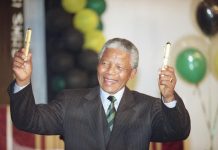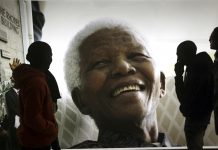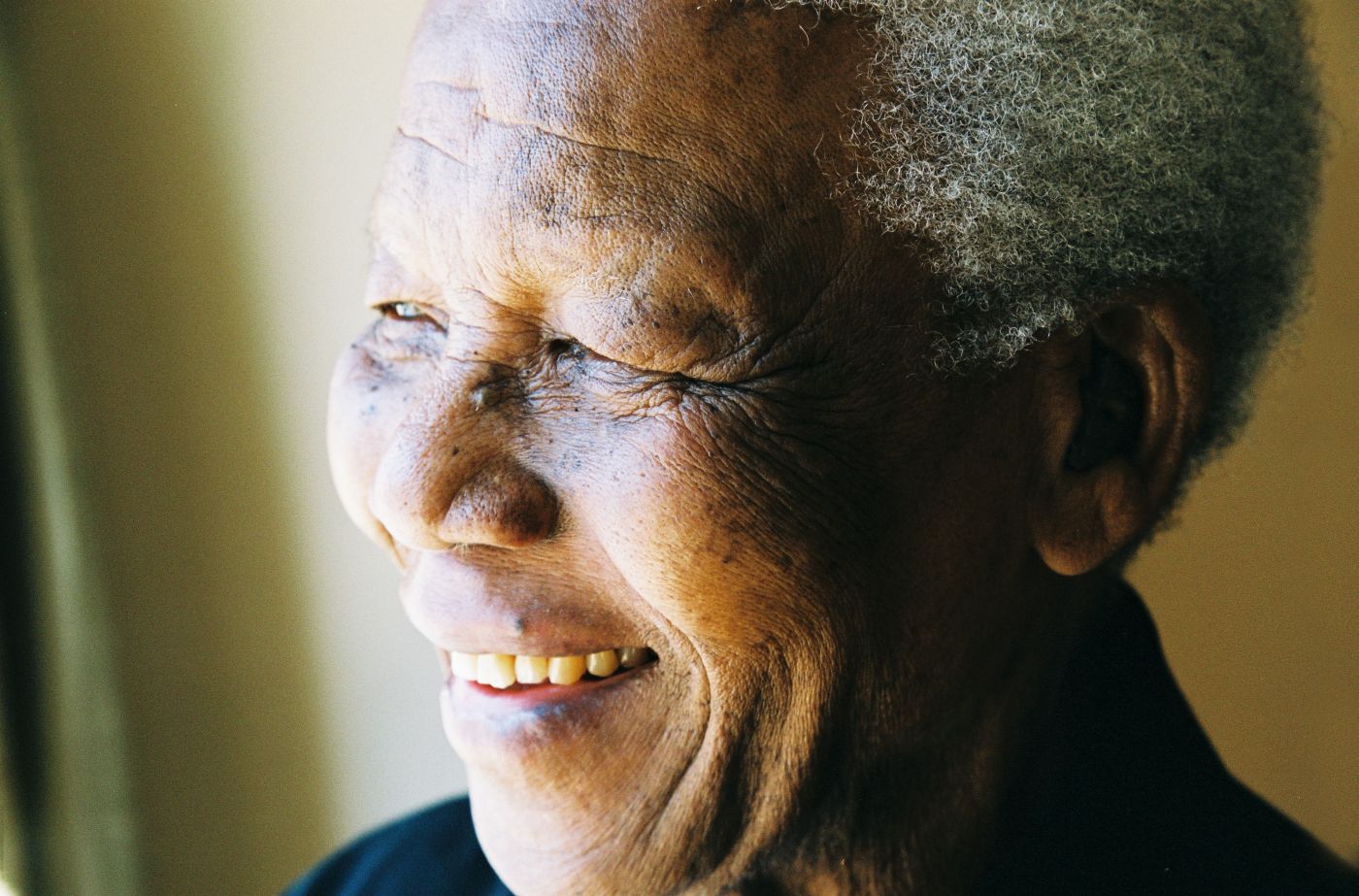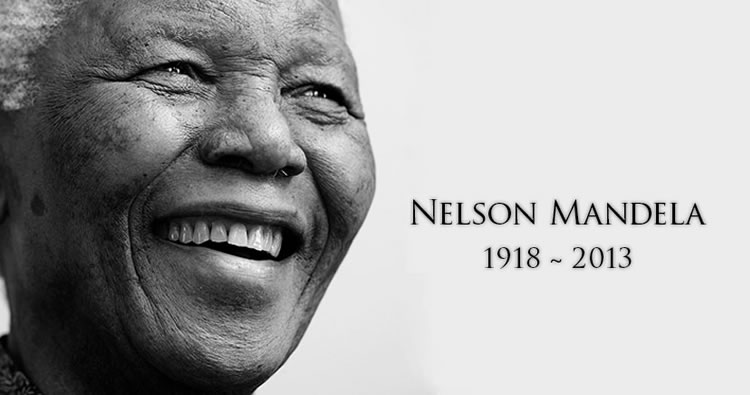
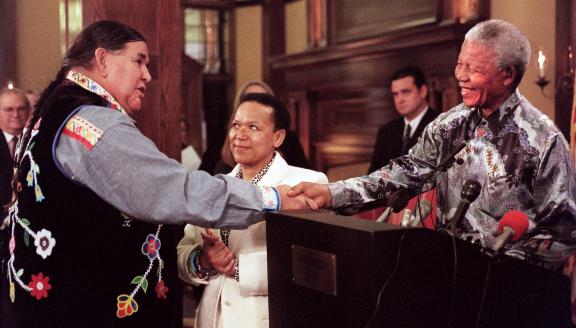
July 18, 1918
Born
Nelson Rolihlahla Mandela is born in the Umtata district of Transkei, the son of a tribal chief.
1942
Education
Mandela receives his law degree from the University of the Witwatersrand, located in Johannesburg, South Africa.
1944
ANC Youth League
Helps form the ANC Youth League with Oliver Tambo and Walter Sisulu. Marries Evelyn Mase, Sisulu’s cousin.
1948
Apartheid
The National Party comes to power in South Africa and implements a policy of apartheid – an Afrikaans word meaning “apartness.”
1952
Defiance campaign
Leads the Defiance Campaign, encouraging people to break racial separation laws. Convicted under Suppression of Communism Act, banned from attending gatherings and leaving Johannesburg. With Tambo, forms the first black law partnership in South Africa.
1956
Charged with treason
Mandela is one of 156 South Africans charged with treason for supporting the Freedom Charter, which called for a non-racial democracy and a socialist-based economy. All are acquitted in 1961.
1958
Marriage
Marries social worker Winnie Nomzamo Madikizela after divorcing Eveyln.
1960
Deadly protests
Sixty-nine black protesters are killed by police in Sharpeville. A state of emergency is declared, and the ANC is outlawed.
1961
ANC guerrilla wing formed
Helps establish ANC guerrilla wing called Umkhonto we Sizwe, or “Spear of the Nation.”
1962
First sentence
Charged with illegally leaving the country and incitement to strike and sentenced to five years’ hard labor. Government declares Winnie Mandela a banned person and restricts her to the Soweto black township outside Johannesburg.
June 12, 1964
Sentenced to life imprisonment
Mandela is one of eight people found guilty of sabotage after police seized ANC documents that outlined a planned guerrilla campaign. Mandela is sentenced to life imprisonment. He is taken to Robben Island Prison off Cape Town.
June 16, 1976
Hundreds dead in protest
Police fire on a protest in Soweto against an edict requiring blacks to be taught in Afrikaans. Violence spreads across South Africa, leaving hundreds dead. The Soweto Uprising galvanizes the anti-apartheid movement around the world.
1985
Offer of release
South African President P.W. Botha offers to release Mandela if he will renounce violence. In a fiery statement read by his daughter Zindzi at a rally, Mandela says the burden is on the government to dismantle apartheid and grant full political rights to blacks.
1989
De Klerk elected president
F.W. de Klerk becomes president and launches a series of reforms. He releases Sisulu and four other of Mandela’s co-defendants. Leading anti-apartheid groups repudiate Winnie Mandela, accusing her of complicity in the abduction and assault of a 14-year-old black activist.
February 2, 1990
ANC legalized
De Klerk legalizes the ANC.
February 11, 1990
Released
Mandela is released after spending 27 years in prison.
August 6, 1990
Violence denounced
The ANC renounces violence in return for a government agreement to free political prisoners.
1991
ANC election
Mandela is elected president of the ANC. The last major apartheid laws are repealed.
1993
Election, Nobel Peace Prize
A draft constitution is adopted, opening the way to South Africa’s first all-race election. Mandela and de Klerk receive the Nobel Peace Prize for negotiating an end to apartheid.
May 10, 1994
Mr. President
Mandela is inaugurated as South Africa’s first black president.
June 24, 1995
Rugby World Cup
In a well-chosen gesture of forgiveness, Mandela appears wearing South African colors at
the Rugby World Cup final in Johannesburg to congratulate the victorious home team, bringing the overwhelmingly white crowd of 63,000 to its feet chanting “Nelson! Nelson! Nelson!”
May 29, 1996
Divorce
Granted a divorce from Winnie Mandela. The couple had been separated since 1992.
July 18, 1998
Third marriage
Weds Graca Machel, the widowed former first lady of neighboring Mozambique, on his 80th birthday.
June 16, 1999
Retirement
Mandela retires after one term as president. Turns his attention to peacemaking in other parts of Africa and the world and to fighting AIDS.
2005
Son’s death
When his son, Makgatho, dies, Mandela says publicly that the cause was AIDS – a powerful show of openness in a country where the disease is largely kept a shameful secret.
July 18, 2009
91st birthday – International Mandela Day
His 91st birthday is declared international Mandela Day, which organizers hope will become an annual event devoted to community service.
July 11, 2010
Johannesburg hosts World Cup
Mandela attended the World Cup at the Soccer City stadium at the World Cup, whose staging in South Africa allowed the country to shine internationally. It was the last public appearance for the former president.
December 5, 2013
Mandela dies
Nelson Mandela died at the age of 95 after battling a recurring lung infection. In the days before his death, his daughter, Makaziwe Mandela, told SABC television news that he was still “teaching us lessons; lessons in patience, in love, lessons of tolerance.”


